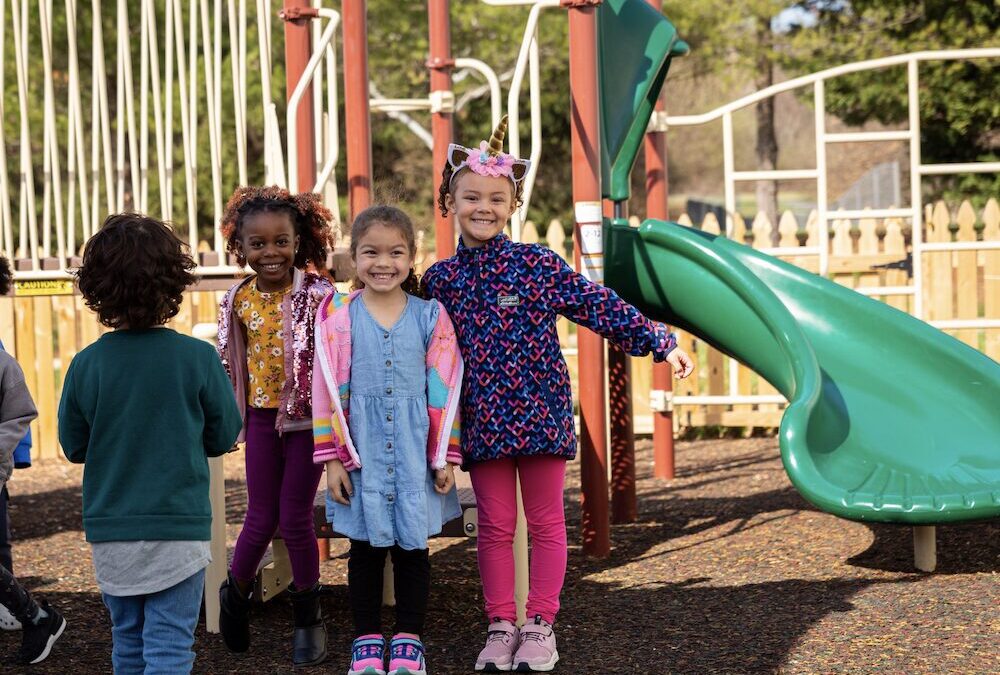In a world where childhood is often structured and screen-centered, outdoor play is one of the few experiences that gives kids the freedom to explore, create, and thrive on their own terms. It’s more than recess—it’s a foundation for growth in every area of development.
Here’s why getting outside is essential, and how you can make the most of it.
Strong Bodies Start Outside
Climbing, running, jumping, and biking do more than burn off energy—they develop muscles, improve balance, and build coordination. Sunlight also helps the body produce vitamin D, which is critical for bone health and immune support. Outdoor play is one of the easiest, most natural ways to promote physical fitness in early childhood.
Try this: Let your child set up their own obstacle course in the backyard using household items or natural materials. It’s free-form fitness with a big developmental payoff.
The Outdoors Builds Calm, Confident Kids
Time in nature can lower stress and help regulate emotions. Children who play outside regularly often show better focus, more self-control, and greater emotional resilience. The freedom to move, shout, imagine, and unwind is a powerful tool for mental health.
Try this: Create a “nature nook” where kids can sit quietly, look for shapes in clouds, or listen to birds. Even five minutes of calm observation can shift their mood.
Nature is the Best Classroom
Outdoor environments constantly change—weather, light, textures, sounds. That variety stimulates curiosity and builds cognitive flexibility. Whether they’re figuring out how to cross a stream or counting bugs in the garden, kids are practicing critical thinking and early STEM skills without even realizing it.
Try this: Encourage open-ended exploration with prompts like, “What do you think made that trail?” or “Can you find something that’s soft, round, or smells interesting?”
Learning to Play Together Happens Outside
Shared outdoor play teaches problem-solving, turn-taking, cooperation, and conflict resolution. Kids naturally invent games, assign roles, and navigate challenges when they’re playing in groups—and those are the same skills they’ll use later in school, work, and life.
Try this: Host a neighborhood “loose parts play day” with buckets of pinecones, fabric, rope, cardboard boxes, and other safe, unstructured items. Step back and watch their collaboration take off.
Making Outdoor Time a Habit
You don’t need a forest to make outdoor play part of your child’s day. Whether it’s a five-minute bug hunt before dinner or a weekend picnic at the park, consistency matters more than quantity. The more often kids play outside, the more comfortable—and creative—they become.
Ideas to build a habit:
- Walk to school instead of driving.
- Add “outside play” to your family routine, like reading or brushing teeth.
- Pick one day each week to try a new nature-based activity.
Final Thought: Childhood Was Meant to Be Lived Outdoors
Outdoor play isn’t a bonus—it’s a baseline for healthy childhood development. When you give kids space to run, jump, build, imagine, and connect with the natural world, you’re supporting their growth in every way that matters.
Let’s keep nature part of the daily rhythm. Because the more kids get outside, the more they grow inside.
Discover the Celebree Difference
At Celebree School, we know that outdoor play isn’t just fun—it’s fundamental. Our programs are built around the idea that hands-on exploration and movement drive real learning. From sensory gardens to nature-based curriculum activities, we give children the space to grow—physically, socially, and emotionally.
Looking for a school that believes in the power of play? Find a Celebree location near you to learn more.

